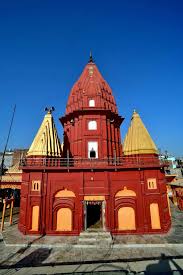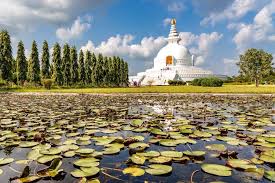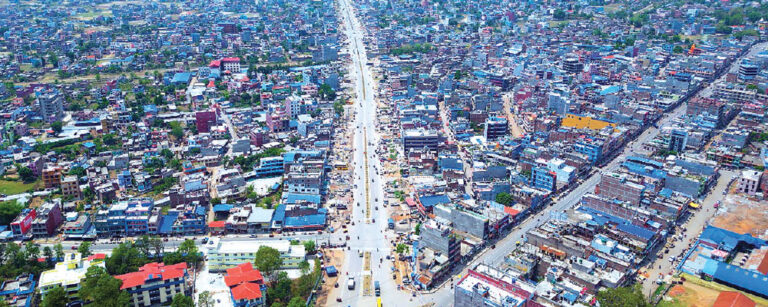A Tapestry of History and Culture
Whispers of ancient tales seem to float on the breeze in Kapilvastu District, a storied region steeped in historical grandeur and cultural vibrancy. Situated in the serene lap of Nepal, this district isn’t just a point on the map—it’s where narratives of the past and present intertwine, creating a colorful mosaic of life. From the lush greenery that winks at the skies to the rhythmic chants from monasteries that echo through time, Kapilvastu District is an embodiment of both tranquility and festivity.
Immersing in Diversity: Kapilvastu’s Geographical and Cultural Spectrum
Nestled amidst the grandeur of the Himalayas, Kapilvastu District unfolds as a vibrant quilt of terrains and cultures. It shares its borders with Palpa to the north and Rupandehi to the east, offering a scenic collage of nature’s best. The district’s climate is a theatrical display of nature’s moods—scorching summers that retreat to pave the way for mild, welcoming winters, while the monsoon season cascades through the valleys with a life-giving force. Kapilvastu’s topography is a gentle embrace of flat, fertile plains that rise into undulating hills, each contour narrating a story from the depths of time.

The etymology of Kapilvastu is steeped in antiquity, linked to the revered sage Kapila, and this historical resonance is palpable in every corner of the district. The district reverberates with the symphony of several languages, each spoken with a cadence that captures the essence of the local ethos. Tharu, with its rich oral heritage; Awadhi, echoing the warmth of the terai; and Nepali, the thread that weaves the national narrative—these are the voices of Kapilvastu.
This linguistic tapestry is a testament to the intricate patchwork of ethnicities and castes residing in Kapilvastu. The Tharus, indigenous to the Terai, coexist with the Brahmins, the Muslims, and myriad other communities, each contributing to a vibrant social mosaic. This diversity extends to the domain of education, where recent strides have seen the literacy rate climb, reflecting the district’s commitment to knowledge and progress. Faith, too, is a colorful spectrum here, with Hindu temples and Buddhist stupas dotting the landscape, silent yet eloquent testaments to the spiritual saga that is an integral thread in the fabric of Kapilvastu.

The spiritual confluence is more than just coexistence—it is a rich, interconnected dialogue that has withstood the test of time, fostering a community where festivals, rituals, and daily life are infused with a sense of shared humanity. In Kapilvastu, the call to prayer from a minaret intertwines with the chime of temple bells, and the serene silence of a monastery offers solace from the temporal world. It is a place where history is not just remembered; it is lived and breathed, a dynamic continuum from the time of the Buddha to the pulse of the present.

Within this cultural chiaroscuro, Kapilvastu holds its head high, a beacon of pluralism and peace. It stands as a proud representation of Nepal’s identity, a crossroads where paths from the past lead to roads of the future, and where every citizen, every visitor, is invited to partake in its ongoing narrative. It is here, in the heart of the Terai, that the essence of Nepal’s enduring allure is most profoundly felt.
Administrative Hub: Taulihawa at the Core of Kapilvastu
Taulihawa, not merely a town but the heartbeat of Kapilvastu District, serves as the administrative epicenter from where the pulse of governance and daily life emanates. This town is more than an assembly of buildings and byways—it’s the vibrant nucleus of the district’s political, cultural, and economic activities. As the headquarters, Taulihawa is the canvas on which the administrative narrative of the district is painted, overseeing and binding the ten local bodies that form the administrative skeleton of Kapilvastu.

These ten local governments are not just administrative divisions but are significant in their own right, each contributing to the district’s identity. They include dynamic municipalities like Shivaraj, with its blend of tradition and modernity; Buddha, a name that resonates with peace and enlightenment; and Krishnanagar, a melting pot of commerce and culture. These local units function like stars within the Kapilvastu constellation, each one shining with its own light, its own stories, and its own contributions to the fabric of the district.
In Taulihawa, history and present coalesce. The markets buzz with the energy of commerce as they have for centuries. Walking through them is akin to flipping through the pages of an open-air history book, with each alley and shop narrating a vignette from a bygone era. The air is thick with the aroma of street food mingling with the fragrance of incense from nearby temples, a sensory reminder of the town’s duality as a custodian of both the sacred and the profane.

This administrative core is surrounded by the landmarks of power and faith—government offices residing in close quarters to sites of worship, symbolizing the district’s allegiance to both secular governance and spiritual guidance. It is here that decisions are made, futures are forged, and the daily rhythms of administration are set to the tempo of Taulihawa’s enduring legacy. Despite being a center of authority, the town maintains a warmth and approachability, its people embodying the hospitable spirit that Nepal is renowned for.

Taulihawa’s significance as the district’s command center is underscored by its infrastructure, catering to the needs of not just its residents but also those of the surrounding rural tapestry. With educational institutions, healthcare facilities, and administrative offices, it draws people from all corners of Kapilvastu, serving as a fulcrum around which the district’s life revolves. It’s a hub that connects the dots of Kapilvastu’s vast expanse into a cohesive picture, making it the ideal starting point for anyone looking to understand or engage with the district in any meaningful way.
Discovering Kapilvastu: A Tapestry of Historical Grandeur and Natural Splendor
Kapilvastu district, a mosaic of cultural narratives and natural beauty, extends an open invitation to history buffs and nature enthusiasts alike. It serves as a bridge between the ancient world and the present, offering a suite of attractions that delight the senses and elevate the spirit:
- Mayadevi Temple: This isn’t just a temple; it’s a journey back in time to where Buddha started his life. The spiritual ambience here is tangible, enveloping pilgrims and visitors in a profound peace.
- Archaeological Remains at Tilaurakot: Amidst these time-scarred ruins, the ancient Shakya kingdom still echoes with stories of power, enlightenment, and timeless wisdom.
- Lumbini: Merely a stone’s throw away, this hallowed ground marks the convergence of faiths and philosophies, a beacon for seekers of tranquility and truth.

Kapilvastu District is not just a destination; it’s an experience, a chapter from history that you can live and breathe. It’s where every grain of sand tells a story, and every monument is a sentinel of time. As you wander through its ancient pathways, let the spirit of Kapilvastu inspire you, just as it has inspired countless souls throughout history.
FAQs AboutKapilvastu District
Visit during the cool months from October to March when the weather is most pleasant.
Kapilvastu is accessible by road from major cities in Nepal, with regular bus services.
From guesthouses to hotels, Kapilvastu offers a range of stay options to suit your comfort and budget.
Indeed, it’s a treasure trove of experiences for all age groups, promising both education and excitement.
Local guides are available, often recommended to fully appreciate the historical context of the sites.
If you know any more places where we can visit or any other information then feel free to comment or message us.
You can find article in Nepali language here.
Watch videos of different places on YouTube channel named as THE SANDESH NEUPANE or click here.
All the photo copyright to the respective owner. For any querry or anything related to copyright mail me with proof at sandesh@thesandeshneupane.com or admin@thesandeshneupane.com .







